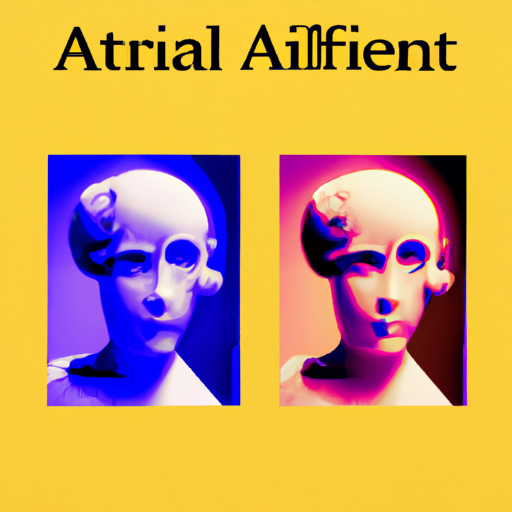
-
Table of Contents
The Impact of Artificial Intelligence on Graphic Design

Artificial Intelligence (AI) has revolutionized various industries, and graphic design is no exception. With the ability to analyze data, learn from patterns, and generate creative outputs, AI has transformed the way designers work and the possibilities they can explore. In this article, we will explore the impact of AI on graphic design, examining its benefits, challenges, and the future it holds for the industry.
1. Automating Repetitive Tasks
One of the significant advantages of AI in graphic design is its ability to automate repetitive tasks. Designers often spend a considerable amount of time on mundane activities such as resizing images, cropping photos, or creating templates. AI-powered tools can now handle these tasks efficiently, freeing up designers’ time to focus on more creative and strategic aspects of their work.
For example, Adobe Sensei, an AI platform, offers features like Content-Aware Fill, which intelligently removes unwanted elements from images. This tool saves designers hours of manual editing, allowing them to work more efficiently and meet tight deadlines.
2. Enhancing Creativity
Contrary to popular belief, AI is not here to replace designers but rather to enhance their creativity. AI algorithms can analyze vast amounts of data, including design trends, user preferences, and successful campaigns, to generate insights that designers can leverage in their work.
Designers can use AI-powered tools to generate design suggestions, explore different color palettes, or experiment with typography. These tools act as creative assistants, providing designers with inspiration and helping them push the boundaries of their creativity.
For instance, Logojoy is an AI-based platform that generates logo designs based on user preferences. It uses machine learning algorithms to understand design aesthetics and create unique logos tailored to individual needs. This not only saves time but also provides designers with a starting point for their creative process.
3. Improving Design Efficiency
AI can significantly improve design efficiency by streamlining the design process and reducing the number of iterations required. Designers can use AI-powered tools to generate multiple design variations quickly, allowing them to explore different options and iterate faster.
Moreover, AI algorithms can analyze user feedback and engagement data to optimize designs. By understanding what resonates with the target audience, designers can make data-driven decisions and create designs that are more likely to be successful.
For example, the platform Canva uses AI to analyze user interactions with design templates. It tracks which templates are most popular and suggests similar designs to users, increasing the chances of creating visually appealing and engaging content.
4. Personalizing User Experiences
AI enables designers to create personalized user experiences by leveraging data and automation. By analyzing user behavior, preferences, and demographics, AI algorithms can generate customized designs that cater to individual needs.
For instance, Netflix uses AI algorithms to personalize the artwork displayed for each movie or TV show based on user preferences. This level of personalization enhances the user experience and increases engagement.
Similarly, AI-powered chatbots can provide personalized design recommendations based on user input. These chatbots can understand user requirements, suggest relevant design elements, and even generate design mockups, making the design process more interactive and user-centric.
5. Ethical Considerations
While AI brings numerous benefits to the graphic design industry, it also raises ethical concerns. Designers must be cautious when using AI-powered tools to ensure they do not compromise originality or perpetuate biases.
AI algorithms learn from existing data, which can introduce biases if the data is not diverse or representative. Designers need to be aware of these biases and actively work to counteract them by incorporating diverse perspectives and manually reviewing AI-generated outputs.
Additionally, designers should use AI as a tool to enhance their creativity rather than relying solely on AI-generated designs. It is crucial to strike a balance between automation and human touch to maintain the uniqueness and authenticity of design work.
6. The Future of AI in Graphic Design
The future of AI in graphic design is promising. As AI continues to evolve, we can expect more advanced tools and capabilities that further enhance designers’ workflows and creativity.
AI-powered design tools will become more intuitive, understanding designers’ preferences and styles to generate more accurate suggestions. These tools will act as collaborative partners, working alongside designers to bring their visions to life.
Furthermore, AI will enable designers to create designs that are not only visually appealing but also emotionally intelligent. AI algorithms will be able to analyze user emotions and tailor designs to evoke specific responses, creating more impactful and engaging visual experiences.
Summary
Artificial Intelligence has had a profound impact on graphic design, automating repetitive tasks, enhancing creativity, improving design efficiency, and personalizing user experiences. While AI brings numerous benefits, designers must be mindful of ethical considerations and ensure they maintain their creative touch. The future of AI in graphic design holds great potential, with more advanced tools and emotionally intelligent designs on the horizon. By embracing AI as a creative assistant, designers can unlock new possibilities and push the boundaries of their craft.
